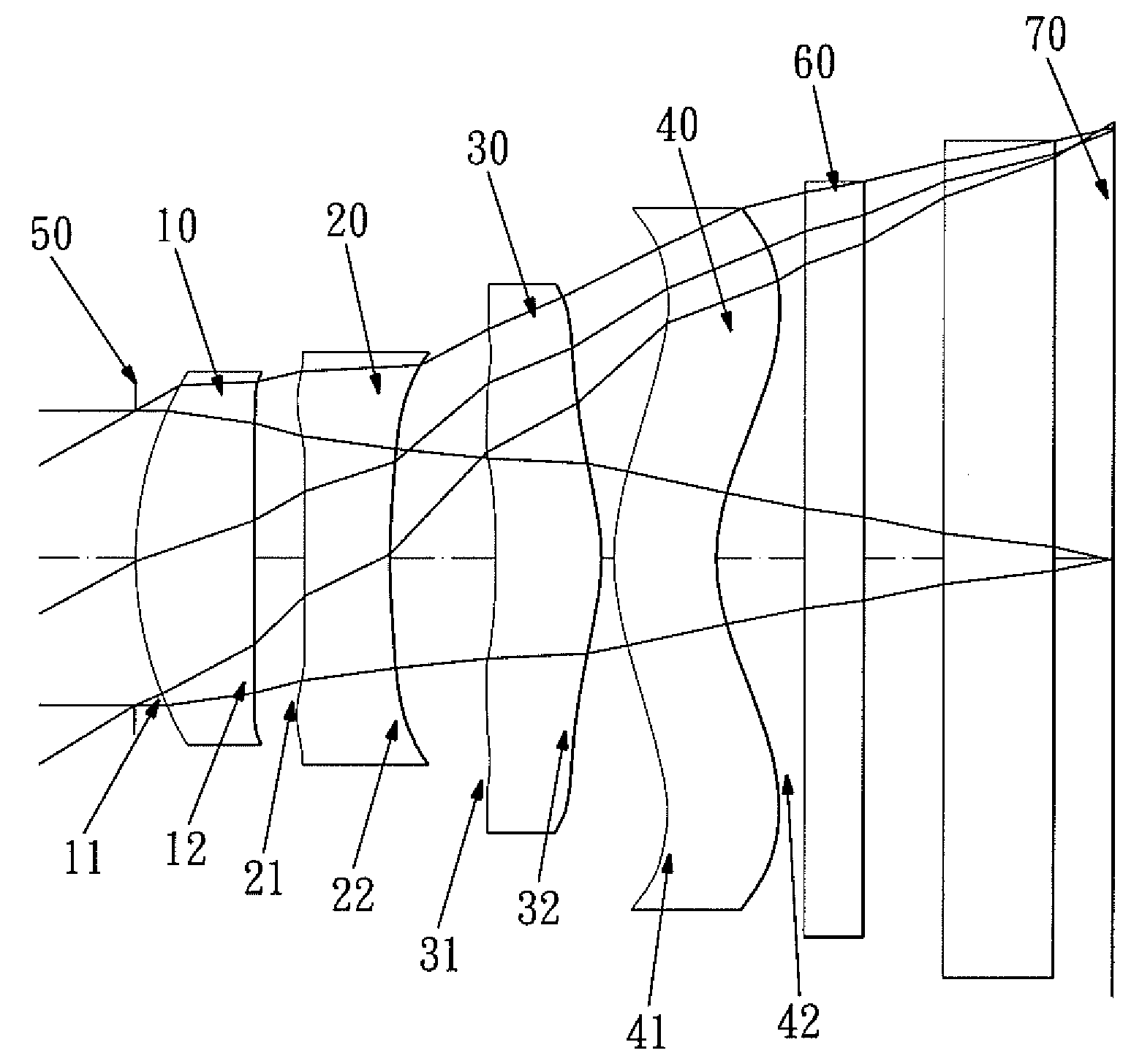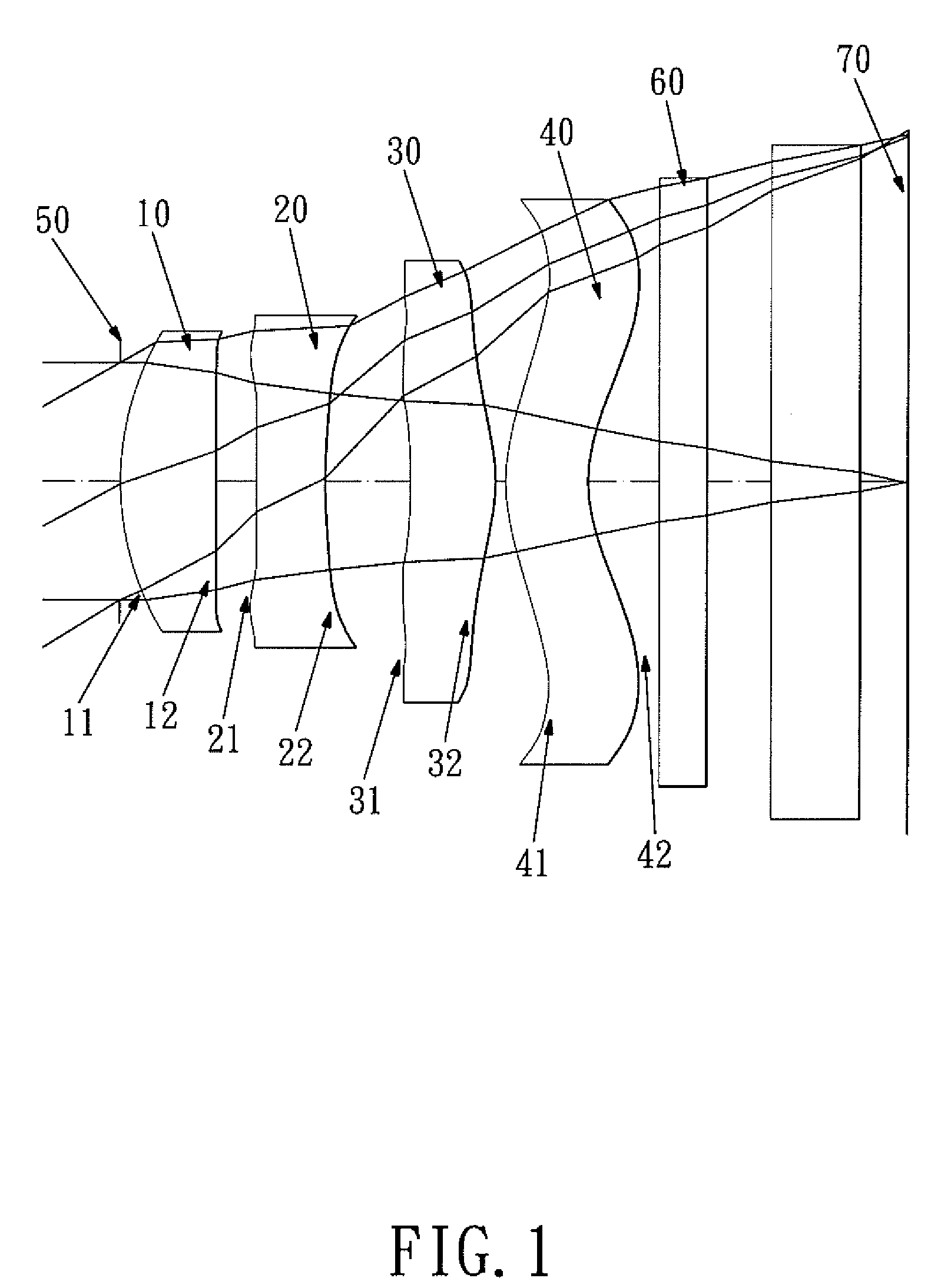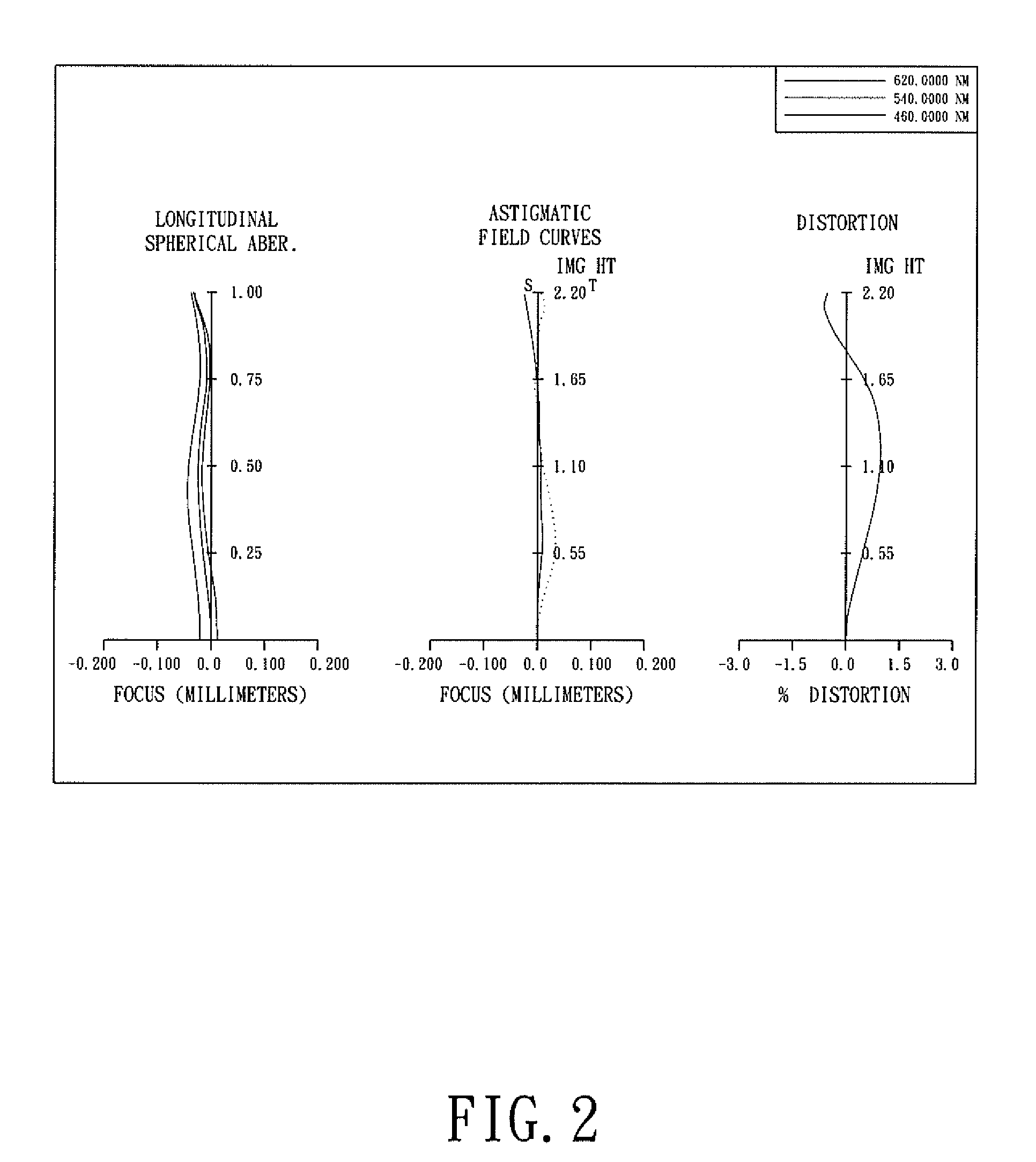Optical system for taking image
- Summary
- Abstract
- Description
- Claims
- Application Information
AI Technical Summary
Benefits of technology
Problems solved by technology
Method used
Image
Examples
first embodiment
[0050]The optical system of the first embodiment comprises four lens elements with refractive power, from the object side to the image side:
[0051]A first lens element 10 with positive refractive power has a convex front surface 11 and a concave rear surface 12.
[0052]A second lens element 20 with negative refractive power has a concave front surface 21 and a concave rear surface 22.
[0053]A third lens element 30 with positive refractive power has a concave front surface 31 and a convex rear surface 32.
[0054]A fourth lens element 40 with positive refractive power has a convex front surface 41 and a concave rear surface 42.
[0055]An aperture stop 50 is located in front of the first lens element 10 for controlling the brightness of the optical system.
[0056]An IR cut filter 60 is located behind the fourth lens element 40 and has no influence on the focal length of the optical system.
[0057]And an image plane 70 is located behind the IR cut filter 60.
[0058]In the optical system, the Abbe num...
second embodiment
[0081]The Abbe number of the second lens element in the second embodiment is V2, and V2=23.4.
[0082]The first lens element 10, the second lens element 20, the third lens element 30, and the fourth lens element 40 are all made of plastic injection molding. The respective surfaces of the lenses are all aspheric, an inflection point is formed on the aspheric rear surface 42 of the fourth lens element 40, and the equation of the curve of the aspheric surfaces of the second embodiment is the same as that of the first embodiment.
[0083]In the second embodiment, the refractive index of the first lens element is N1, and N1=1.543, and the refractive index of the second lens element is N2, and N2=1.632, and the refractive index of the third lens element is N3, and N3=1.543.
[0084]In the second embodiment, the focal length of the first lens element with positive refractive power is f1, the focal length of the second lens element is f2, the focal length of the fourth lens element is f4, the focal ...
third embodiment
[0101]In the third embodiment, the refractive index of the first lens element is N1, and N1=1.543, and the refractive index of the second lens element is N2, and N2=1.632, and the refractive index of the third lens element is N3, and N3=1.543.
[0102]In the third embodiment, the focal length of the first lens element with positive refractive power is f1, the focal length of the second lens element is f2, the focal length of the fourth lens element is f4, the focal length of the optical system is f, they satisfy the relations: f / f1=1.41, |f / f2|=0.79, f / f4=−1.03.
[0103]In the third embodiment, the radius of curvature of the front surface of the first lens element is R1, and R1=1.28930 [mm], the radius of curvature of the front surface of the second lens element is R3, and it satisfies the relation: 1 / R3=0.15 [1 / mm].
[0104]In the third embodiment, the total length of the optical system is H, and H=4.56 [mm], the center thickness of the second lens element is CT2, and CT2=0.35 [mm], and the...
PUM
 Login to View More
Login to View More Abstract
Description
Claims
Application Information
 Login to View More
Login to View More - R&D
- Intellectual Property
- Life Sciences
- Materials
- Tech Scout
- Unparalleled Data Quality
- Higher Quality Content
- 60% Fewer Hallucinations
Browse by: Latest US Patents, China's latest patents, Technical Efficacy Thesaurus, Application Domain, Technology Topic, Popular Technical Reports.
© 2025 PatSnap. All rights reserved.Legal|Privacy policy|Modern Slavery Act Transparency Statement|Sitemap|About US| Contact US: help@patsnap.com



